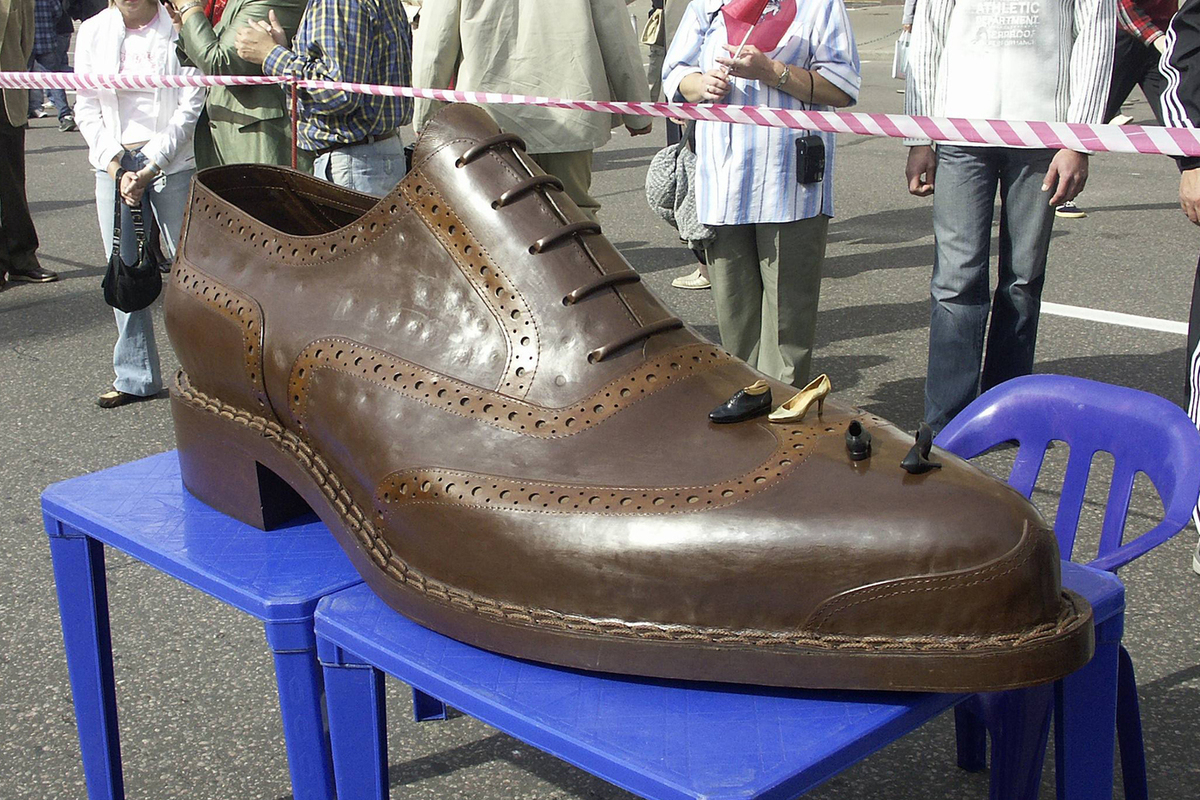“Grey” shoes from Europe pour into Russia: “It’s difficult to save money”
[ad_1]

How resellers from Armenia and Kyrgyzstan make money from domestic consumers
In 2023, Armenia, Kyrgyzstan and Kazakhstan became leaders in increasing the volume of footwear exports to the Russian market from pre-sanction 2021. Among the large suppliers were also European countries, for example, Poland, Latvia, Lithuania, Germany and Austria. This is despite the fact that the EU is actively suppressing all economic and trade ties with Moscow. So what kind of shoes are coming to our stores from abroad? How much does it cost and how to save on new things? Market experts told MK about this.
Armenia supplied $33 million worth of shoes to Russia (an increase of almost 11 times over two years), Kyrgyzstan – $37 million (an increase of 6.53 times), Kazakhstan – $12 million (an increase of 6.49 times), Serbia – by $16 million, USA – by $14.5 million (an increase of 3.9 and 3.6 times, respectively). At the same time, the top three shoe exporters in 2023 included China, Italy and Turkey, whose supplies are estimated at $3.4 billion, $306 million and $154 million, respectively. Such conclusions follow from data from the UN platform Comtrade and open statistics, which were analyzed by RIA Novosti specialists.
What shoes go to domestic stores? European counterfeit goods or CIS producers increasing the production of their own goods?
Dinara Vasbieva, Associate Professor at the Financial University under the Government of the Russian Federation:
“According to domestic statistical data, in the third quarter of 2023, the share of imported shoes in the Russian market was 56%. Moreover, footwear imports increased by 47% compared to the same period in 2022 due to newly built and adapted parallel import logistics, the low base effect of 2022 and the restoration of household incomes. Europe continues to supply shoes to Russia. For example, in a large retail chain selling shoes throughout Russia, today you can even find new collections of shoe lines from well-known European brands – in particular, Italian and German, which were in high demand among Russians in pre-sanction times. Footwear of European brands is supplied through parallel imports, and some brands, along with other foreign companies, have not left the Russian market and have maintained their positions here. The range of footwear presented by European brands includes shoes, boots, sneakers, sneakers, boots, both in the middle price segment (7-15 thousand rubles) and in the premium segment (from 30 thousand rubles and above).”
Dmitry Yanin, Chairman of the Board of the International Confederation of Consumer Societies (ConfOP):
“Shoe prices directly depend on the ruble to dollar exchange rate. As the ruble weakens, prices rise. In addition, prices are traditionally influenced by the actions of the customs service. With tightening of access to the market and various logistical problems on the part of customs, prices may also increase. As for the countries that have become leaders in terms of volumes, most likely we are talking about gray imports of shoe brands that people are accustomed to. Russians are quite loyal to their favorite brands. They have been buying their products for 5-10-15 years and now, as long as it is possible to import these shoes through third parties, people will be willing to overpay 30% or more for a pair of “branded” shoes. Meanwhile, intermediaries in Central Asia or the Baltic countries make money by buying well-known American and European brands and resell them to Russia. Leading brands closed their stores and left the domestic market. So now resellers are making money from this. There is definitely no increase in the production and supply of our own products to the Russian market from Kazakhstan, Kyrgyzstan or Armenia. This is pure “gray” import. If we assume that the ruble will weaken, then we can predict an increase in prices in proportion to the fall of the ruble. It’s difficult to save now because there are simply no life hacks for purchasing. Competition has weakened, and when it falls, when supply on the market decreases, it becomes almost impossible to save money. I can only advise people to use already purchased shoes more carefully. Yes, this advice sounds like it’s from the last century, but we, as consumers, are returning to it faster and faster.”
[ad_2]
Source link






